CHICAGO SYMPHONY ORCHESTRA
THE
Emotions OF OUR Music
CSO for Kids: School Concerts March 7, 2025 | 10:15 & 12:00
CSO for Kids: Family Matinees March 8, 2025 | 11:00 & 12:45

CHICAGO SYMPHONY ORCHESTRA
CSO for Kids: School Concerts March 7, 2025 | 10:15 & 12:00
CSO for Kids: Family Matinees March 8, 2025 | 11:00 & 12:45
How did you feel when you woke up this morning? How about when you left your home today? What feelings hit you as you stepped into Orchestra Hall? Each of us experiences a rainbow of emotions every day. Music can help us express and understand these feelings — whether you’re mad, sad or glad! In this concert, the members of the Chicago Symphony Orchestra will help us understand how composers use the orchestra to express those same feelings and more.
Members of the Chicago Symphony Orchestra
Daniel Bartholomew-Poyser conductor
PROGRAM
MONTGOMERY Starburst
MOZART Symphony No. 40
TCHAIKOVSKY Selections from Symphony No. 4
BINGHAM Diamond
BEETHOVEN Symphony No. 8
PROKOFIEV Symphony No. 1 (Classical)
What did you feel when you heard the first piece, Starburst by Jessie Montgomery? Discuss your feelings with a friend or family member after the concert. Did you all feel the same thing about the piece, or did you have lots of different ideas about its emotions?
What does it sound like to be angry? Is it loud and fast? Quiet and slow? Listen to how Wolfgang Mozart conveys this feeling in his Symphony No. 40. No two people experience emotions the same way, so notice how Mozart differs from how Pyotr Tchaikovsky expresses anger in his Symphony No. 4.
Tune in to the trumpet. In Tchaikovsky’s piece, the trumpet is bright and loud and certainly appears to be upset about something, right? Can you imagine what that might be?
The cello also sounds crabby in this piece. Turn the page to find the angry trumpet and cranky cello.
Hear how the violin expresses sadness in Diamond by Jonathan Bingham. What is it about the violin in this song that sounds unhappy?
Bingham also uses the viola to show us how he is feeling. Can you find the sad violin and viola?
You’ll also hear another movement from Tchaikovsky’s Symphony No. 4. But now, the piece is sad instead of mad! In the same way that you might feel a lot of different emotions in a single day (or even in a single moment), a piece of music can also demonstrate many emotions.
Next, we’ll hear the joyful sounds of Ludwig van Beethoven’s Symphony No. 8 and Sergei Prokofiev’s Symphony No. 1 (Classical).
You’ll notice that Tchaikovsky’s Symphony No. 4 is back again! But this time, the orchestra is feeling happy. This piece has taken us on a journey from mad, to sad, and then to glad. It’s important to feel and recognize our difficult emotions so we can move past them and come to a place of happiness. Music can help guide us on this journey.
In all three glad pieces, you can hear the cheerful sounds of the timpani ringing out. The bouncy tone sounds like someone skipping happily down the street. What other images does it suggest?
The quick, high notes of the flute also sound quite happy. Can you find the cheerful timpani and flute?

How have your feelings changed from the beginning of the concert? What about the music made you feel this way?
Think about some of your favorite songs and how they make you feel. Do you like to listen to them when you are in a particular mood?
When we listen to music, our mood changes because listening to (or making) music increases blood flow to brain regions that generate and control emotions. If you were to scan your brain, you would see it “light up” when the music hits your ears.
We hope you keep listening to and exploring the music of your emotions, and we look forward to welcoming you back to Symphony Center to hear the Orchestra again soon.

Daniel Bartholomew-Poyser is originally from Calgary, Alberta in Canada. He holds a Bachelor of Music Performance and Education from the University of Calgary, and a Master of Philosophy in Performance from the Royal Northern College of Music in Manchester, England. He is concurrently Resident Conductor of Engagement and Education of the San Francisco Symphony, Barrett Principal Education Conductor and Community Ambassador of the Toronto Symphony Orchestra, Artistin-Residence and Community Ambassador of Symphony Nova Scotia and Principal Youth Conductor and Artistic Partner of Canada’s National Arts Centre Orchestra.
Mr. Bartholomew-Poyser is the subject of a multi award-winning CBC documentary Disruptor Conductor, focusing on his efforts to extend the boundaries of the orchestral music world through concerts for neurodiverse, incarcerated, African diaspora and LGBTQ2S+ populations. He has been awarded the RBC Royal Bank Emerging Artist Grant and the Canada Council for the Arts Jean Baudet Prize for Orchestral Conducting.
KLAUS MÄKELÄ zell music director designate RICCARDO MUTI music director emeritus for life
DANIIL TRIFONOV artist-in-residence
violins
Robert Chen Concertmaster
The Louis C. Sudler Chair, endowed by an anonymous benefactor
Stephanie Jeong Associate Concertmaster
The Cathy and Bill Osborn Chair
David Taylor Assistant Concertmaster*
The Ling Z. and Michael C. Markovitz Chair
Yuan-Qing Yu Assistant Concertmaster*
So Young Bae
Cornelius Chiu
Gina DiBello
Kozue Funakoshi
Russell Hershow
Qing Hou
Gabriela Lara
Matous Michal
Simon Michal
Sando Shia
Susan Synnestvedt
Rong-Yan Tang
Baird Dodge Principal
Danny Yehun Jin Assistant Principal
Lei Hou
Ni Mei
Hermine Gagné
Rachel Goldstein ‡
Mihaela Ionescu
Melanie Kupchynsky
Wendy Koons Meir
Joyce Noh §
Ronald Satkiewicz
Florence Schwartz
violas
Teng Li Principal
The Paul Hindemith Principal Viola Chair
Catherine Brubaker
Youming Chen
Sunghee Choi
Wei-Ting Kuo
Danny Lai
Weijing Michal
Diane Mues ‡
Lawrence Neuman
Max Raimi
cellos
John Sharp Principal
The Eloise W. Martin Chair
Kenneth Olsen Assistant Principal
The Adele Gidwitz Chair
Karen Basrak
The Joseph A. and Cecile
Renaud Gorno Chair
Richard Hirschl
Daniel Katz
Katinka Kleijn
Brant Taylor
The Blickensderfer Family Chair
basses
Alexander Hanna Principal
The David and Mary Winton
Green Principal Bass Chair
Alexander Horton Assistant Principal
Daniel Carson
Ian Hallas
Robert Kassinger
Mark Kraemer
Stephen Lester ‡
Bradley Opland
Andrew Sommer
harp
Lynne Turner
flutes
Stefán Ragnar Höskuldsson Principal
The Erika and Dietrich M.
Gross Principal Flute Chair
Emma Gerstein
Jennifer Gunn
piccolo
Jennifer Gunn
The Dora and John Aalbregtse Piccolo Chair
oboes
William Welter Principal
Lora Schaefer Assistant Principal
Scott Hostetler
english horn
Scott Hostetler
clarinets
Stephen Williamson Principal
John Bruce Yeh Assistant Principal
The Governing Members Chair
Gregory Smith
e-flat clarinet
John Bruce Yeh
bassoons
Keith Buncke Principal
William Buchman Assistant Principal
Miles Maner
horns
Mark Almond Principal
James Smelser
David Griffin
Oto Carrillo
Susanna Gaunt
Daniel Gingrich
Esteban Batallán § Principal
The Adolph Herseth Principal Trumpet Chair, endowed by an anonymous benefactor
Mark Ridenour Assistant Principal
John Hagstrom
The Bleck Family Chair
Tage Larsen trombones
Jay Friedman Principal
The Lisa and Paul Wiggin
Principal Trombone Chair
Michael Mulcahy
Charles Vernon
bass trombone
Charles Vernon
tuba
Gene Pokorny Principal
The Arnold Jacobs Principal Tuba Chair, endowed by Christine Querfeld
timpani
David Herbert Principal
The Clinton Family Fund Chair
Vadim Karpinos Assistant Principal percussion
Cynthia Yeh Principal
Patricia Dash
Vadim Karpinos librarians
Justin Vibbard Principal
Carole Keller
Mark Swanson
cso fellows
Jesús Linárez Violin
The Michael and Kathleen Elliott Fellow
Olivia Reyes Bass orchestra personnel
John Deverman Director
Anne MacQuarrie Manager, CSO Auditions and Orchestra Personnel stage technicians
Christopher Lewis Stage Manager
Blair Carlson
Paul Christopher
Chris Grannen
Ryan Hartge
Peter Landry
Joshua Mondie
* Assistant concertmasters are listed by seniority ‡ On sabbatical § On leave
The CSO’s music director position is endowed in perpetuity by a generous gift from the Zell Family Foundation.
The Nancy and Larry Fuller, Gilchrist Foundation, and Louise H. Benton Wagner chairs currently are unoccupied.
The Chicago Symphony Orchestra string sections utilize revolving seating. Players behind the first desk (first two desks in the violins)
change seats systematically every two weeks and are listed alphabetically. Section percussionists also are listed alphabetically.
THE STRING FAMILY includes violin, viola, cello, bass and harp. These instruments are made of wood and strings and are played by vibrating the strings using a bow, or plucking or striking the strings with the fingers.
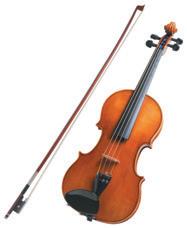
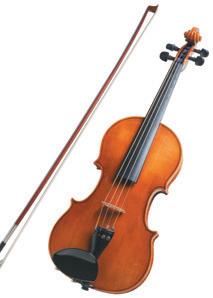
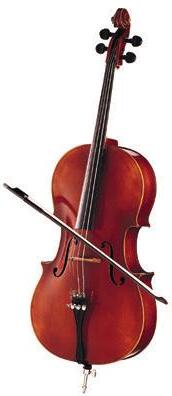
THE WOODWIND FAMILY includes flute, oboe, clarinet, bassoon and saxophone. These instruments all have the same basic shape: a long tube with a mouthpiece at one end. The flute is played by blowing across a mouthpiece to create a vibration. Oboe, clarinet, bassoon and saxophone are all played by blowing air into a single or double reed attached to the mouthpiece, creating a vibration that results in sound.
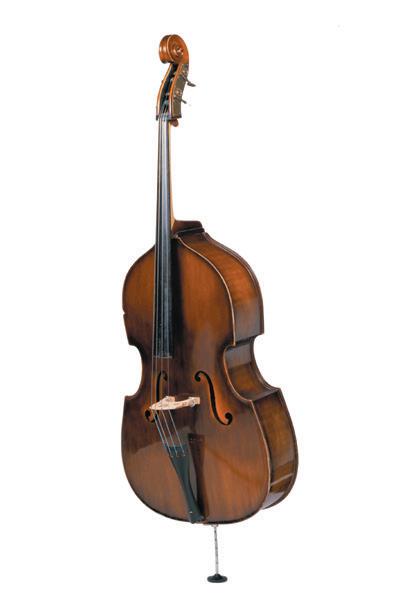





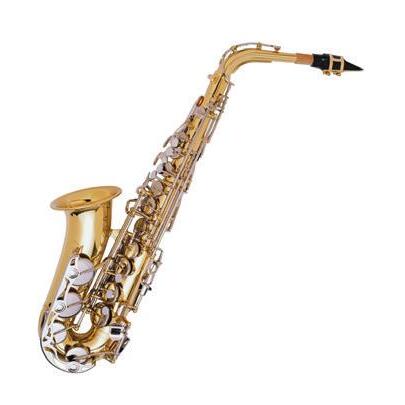
THE BRASS FAMILY includes horn, trumpet, trombone, euphonium and tuba. Brass instruments make a sound when the players vibrate their lips inside a mouthpiece, which is fitted into the instrument. The players can change pitch on a trumpet, horn or tuba by pressing on valves. Trombone players change pitch by moving the slide back and forth.




THE PERCUSSION FAMILY includes snare drum, bass drum, gong, triangle, xylophone, timpani and piano, among many others. Percussion instruments are struck, scraped or shaken.

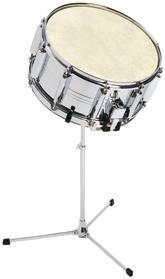



Support for Chicago Symphony Orchestra Association programming for children and families is provided by John Hart and Carol Prins, Kinder Morgan, The Negaunee Foundation, PNC, Megan and Steve Shebik, Michael and Linda Simon, the Walter and Caroline Sueske Charitable Trust and an anonymous family foundation.
Youth Education Program Sponsor
Family Matinees Sponsor
CSO for Kids concerts and CPS Partnerships Corporate Sponsor

Content for Kidsbook was created by Katy Clusen with graphic design by Shawn Sheehy.
Kidsbook© is a publication of the Negaunee Music Institute. For more information, call 312-294-3410 or email institute@cso.org.